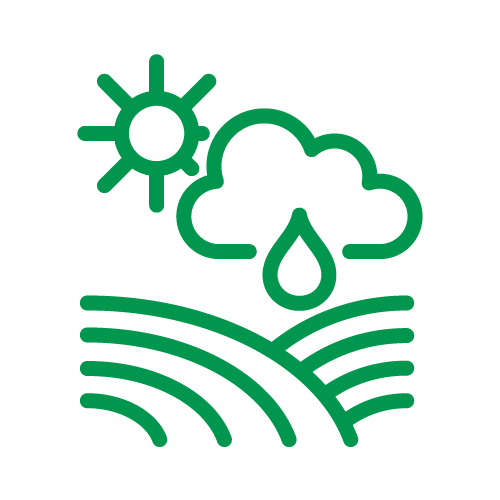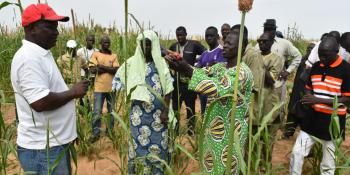Innovation platform for small farmers facing climate change

PIASAC, an interdisciplinary project, builds sustainable, climate-adaptable options together with small producers.
The Innovation Platform for Climate-Smart Agriculture (PIASAC by its Spanish acronym) aimed to find the most efficient and effective structure to promote climate-smart agriculture (CSA) at local level. The project team focused on several aspects in order to understand the socio-technical mechanisms leading to building and adopting CSA options (practices, services, technologies) in a collaborative way and to reflect on how they can be scaled up.

The anatomy of adopting CSA practices. Graphics: Daniel Gutierrez (CIAT)
PIASAC, currently finalizing, has been funded by FONTAGRO, the CGIAR Research Program on Climate Change, Agriculture and Food Security (CCAFS) and Agropolis, and implemented by the International Center for Tropical Agriculture (CIAT), the Honduran Ministry for Agriculture and Livestock (SAG) and the Department for Agricultural Science and Technology (DICTA), the Colombian Ministry for Agriculture and Rural Development (MADR), with support from the French Agricultural Research and International Cooperation Organization (CIRAD).
The different analyses performed led to the creation of a seven-step methodology that allows smallholders to participate in building and adopting options as they adapt to climate change:

The first phase, “Exploring the status quo and engagement”, identifies an area of interest for the community and the local actors that can develop practices to face changes in the climate. This phase employs networks analysis and exploratory surveys.

The second phase, “Co-defining the Innovation Platform”, involved participatory workshops where members (interested local stakeholders identified in the first phase) agree on which are the Platform’s objectives (what facing climate change in the area means) and how it works (Who will be the facilitator? How will working together proceed? How frequently will meetings occur? etc).

In the “Shared Diagnosis” phase, platform members characterize their farms’ strengths and weaknesses, the opportunities and obstacles and the main challenges they need to overcome, in order to define an action plan combining trials, workshops and exchanges. During this step, the project also defines a monitoring system of expected changes, including knowledge indicators, performance of technical solutions identified and adoption rate.

“Identifying solutions” follows the shared diagnosis and this is the phase when the platform members define the technical and organizational options they want to try. Projection tools as well as climate scenarios and a calculator for CSA performance (for three dimensions: productivity, adaptation and mitigation) allow the farmers who are part of the platform to prioritize relevant solutions they can test on their properties.

Testing identified solutions, "Experimenting solutions on the farm" comes next. Members of the platform test new CSA options through participatory mechanisms such as schools for farmers (ECAs by the Spanish acronym).

To validate the process’ capacity to meet its objectives, and using data from the monitoring system set in the third phase, the project then quantifies changes in knowledge, performance and adoption of options. Tools such as the life-cycle analysis can provide insights into the environmental implications of CSA options. The “Evaluation of co-designing and decoupling process” step allows to identify the viability of continuing the process.
 The last phase, “Scaling-up strategy”, analyzes policies to identify tools (programs, subsidies, etc) that allow more farmers to adopt CSA options, and to take advantage of favorable institutional factors and overcome limiting elements in adopting prioritized CSA options.
The last phase, “Scaling-up strategy”, analyzes policies to identify tools (programs, subsidies, etc) that allow more farmers to adopt CSA options, and to take advantage of favorable institutional factors and overcome limiting elements in adopting prioritized CSA options.
The PIASAC project provided valuable lessons on how to make the process more successful:
- The facilitator plays a key role in favoring connections between the platform’s actors.
- The effects of climate change are not the farmers’ main concerns, as they focus more on food security and income problems; thus, it’s essential to use tools that evaluate the co-benefits of CSA practices.
- It is necessary to use interdisciplinary approaches and capacities to support a complex process.
- Not all the steps of the process need to be performed (for example, step 1 can be skipped if the intervention area is already known) or their order can be changed (such as performing step 7 earlier in the process) according to the context.
This methodology will soon be published as an implementation manual that will become a guide for connected projects.
The authors are researchers affiliated with the International Center for Tropical Agriculture (CIAT), the Center for International Research on Environment and Development (CIRAD) and the French National Institute for Agricultural Research (INRA).



